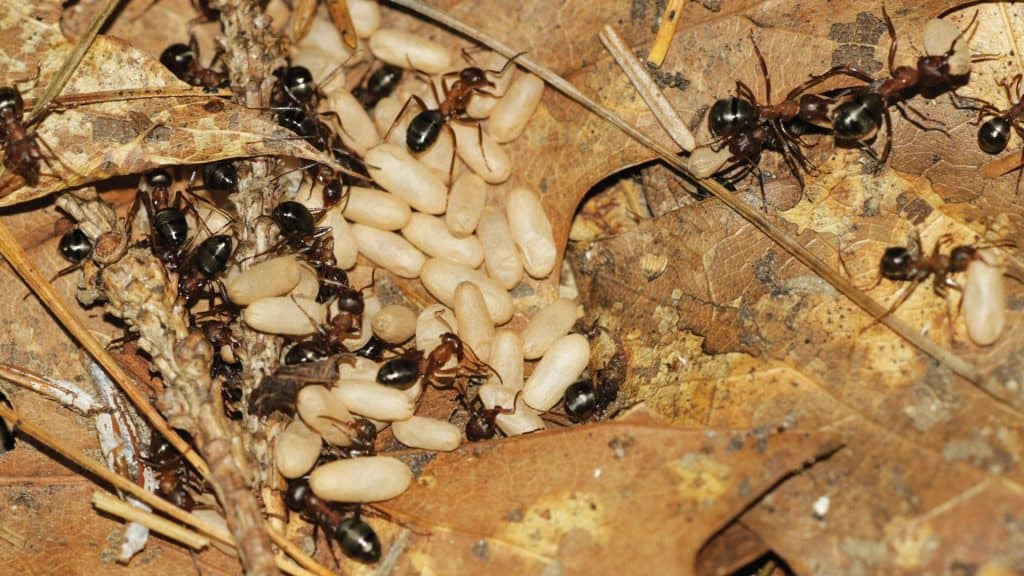What To Do About Ants?

There are between 9,000 & 10,000 known ant species in the world and researchers believe that there may actually be more than 20,000. It’s not surprising that ants are one of the most common pests in homes and businesses. Surveys by the National Pest Management Alliance consistently show that pest control companies across the nation receive more calls for ants than any other pest.
Which ants should you be concerned about?
The good news is that, other than the Carpenter Ant, most ants in our region are considered “nuisance pests”. This doesn’t mean ant infestations are fun or easy to get rid of, it simply means they do not pose much health or property risk. Unlike cockroaches, mice, ticks, mosquitoes and some other pests, ants do not spread disease. Also, with the exception of Carpenter Ants, ants do not cause much damage to property.
The most common problem we see with nuisance ants is that they get into food and make it inedible. We have seen breakfast cereal, bags of sugar, cookies, birthday cakes and many other stored foods teeming with ants. Also, often an infestation of ants is simply feeding on a collection of crumbs that may have fallen in an inaccessible area.
This blog will relate only to ants that live in our region (south-east Pennsylvania) other than Carpenter Ants. Here you can read about Carpenter Ants.
Why do ants even want to come into a house?
The answer, in a word is the weather. Ants will come inside when the weather is too dry or when it is too wet and their nests are flooded. They will come inside when it is too cold and when the food sources outside are not available. They also come inside when it is too cold.
The following are some things to consider when attempting to control ants.
There are three general aspects to the process of Ant Control:
- Exclusion
- Elimination of food and water sources
- Treatment
Exclusion:
Exclusion is simply blocking entry points so the ants cannot find a way in the house or building. Exclusion of ants is tough because they can crawl just about anywhere and squeeze through tiny openings. However, it is still worth giving it your best shot.
First, find and seal off any areas that ants can enter a building such as cracks in the foundation, the holes in the walls where utilities come into the house, un-sealed areas around windows and doors. Silicone sealant or caulking works well for this. Closely inspect around the outside of the house as well as the inside for any cracks in the foundation or openings.
Also, trim back any tree limbs that hang over the roof of the building. Ants often climb out on branches and can be blown or fall onto the roof of your house then find a way inside.
Keep plant materials trimmed back from the house. A space of 5-6 feet between plant material and the house is ideal.
Elimination of food and water sources:
Removing the food and water source for ants is a big deterrent. To the best of your ability, clean up all crumbs, do not leave food out in the open, do not leave dirty dishes in the sink, rinse out food containers before putting them in the trash, keep stored foods in tightly closed containers, clean behind appliances, repair any leaking pipes or faucets.
Even a small amount of water or food is attractive to ants so it is hard to completely eliminate everything but, the more you can reduce the amounts of food and water available, the better.
Treatments:
When using pesticides, always read and follow the label instructions. We recommend using a pest control company with licensed technicians if pesticides are needed. However, if you chose to do it yourself, here are a couple things to consider. Use ant traps that do not kill the ants immediately. If the bait kills the ants quickly, the only ants to die are the ones that fed on the bait. The ants you see feeding only constitute about ten percent of the colony. The slow acting baits allow the worker ants to take the bait back to the nest and, if don’t properly, kill the entire colony.
Do not spray the areas around the ant traps with cleaning products. This will discourage the ants from feeding on the bait. When you have these traps in place, just leave them undisturbed. You should have control within a week.